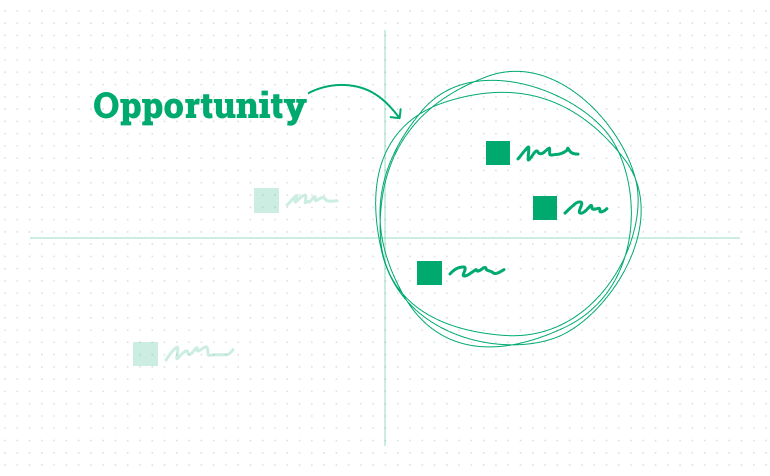Grand Studio
September 10, 2021
The Death of Personas
Nearly ten years ago, we were asked by a large financial services company to help their innovation group spread the gospel of human centricity. Over several years and many product design projects, we created dozens of empathy artifacts, most notably several different generations of personas. These personas were beautiful objects with big photos and many personal descriptions of our character’s desires, motivations, and frustrations.
We don’t make personas like that anymore. Back in the day, we needed personas to promote user empathy for our business and product partners. Now, empathy is baked into product management practices generally, and the hard job is understanding how to connect user understanding to long-term product strategy.
Instead of personas, these days we make more action-oriented user understanding artifacts.
Behavioral Models
Instead of personifying a single user, we describe the intent and/or mental model of classes of users. When we designed experiences for international basketball fans, it was farewell “Julie,” hello “fans who follow players, not teams.” These models discard personal detail in favor of describing their behaviors in relation to our product, and we often end up mapping these models on a 2×2.
Jobs To Be Done
We do a lot of design for professional products, often where there isn’t a choice to use the software; it’s a job requirement. In these cases, personas are completely inappropriate: the personal qualities of any one user are far less important than identifying the users’ JTBD. Once we’ve identified these, we can then classify our users by the similarities and differences in their jobs, which helps us plan and design our software. We find JTBDs pair well with service blueprints where we articulate individual actors’ jobs throughout the service experience, or as individual job maps where the actions can be directly tied to a user’s goal.
Representation Matrices
When we envision or design big enterprise software, there are inevitably users that can be categorized in many ways, including by role, seniority, geography, language, country. A representation matrix helps to identify and organize users across matrix verticals (e.g., “every vendor in Asia”) or horizontals (e.g., “every vendor that supplies raw materials”). This, in turn, helps to identify the user qualities that matter most to our design and product management decisions.
In all cases, these tools are designed to give a strategic output. Rather than helping teams build empathy per se, these are meant to help make hard decisions about what our products should or shouldn’t do. Honestly, making these tools is quite a bit more challenging than making personas. Still, it’s also clear that they better represent the increasingly mature role of HCD in product management and strategy.
Want to learn how we help companies build clarity out of complexity?
We’re here to help!



